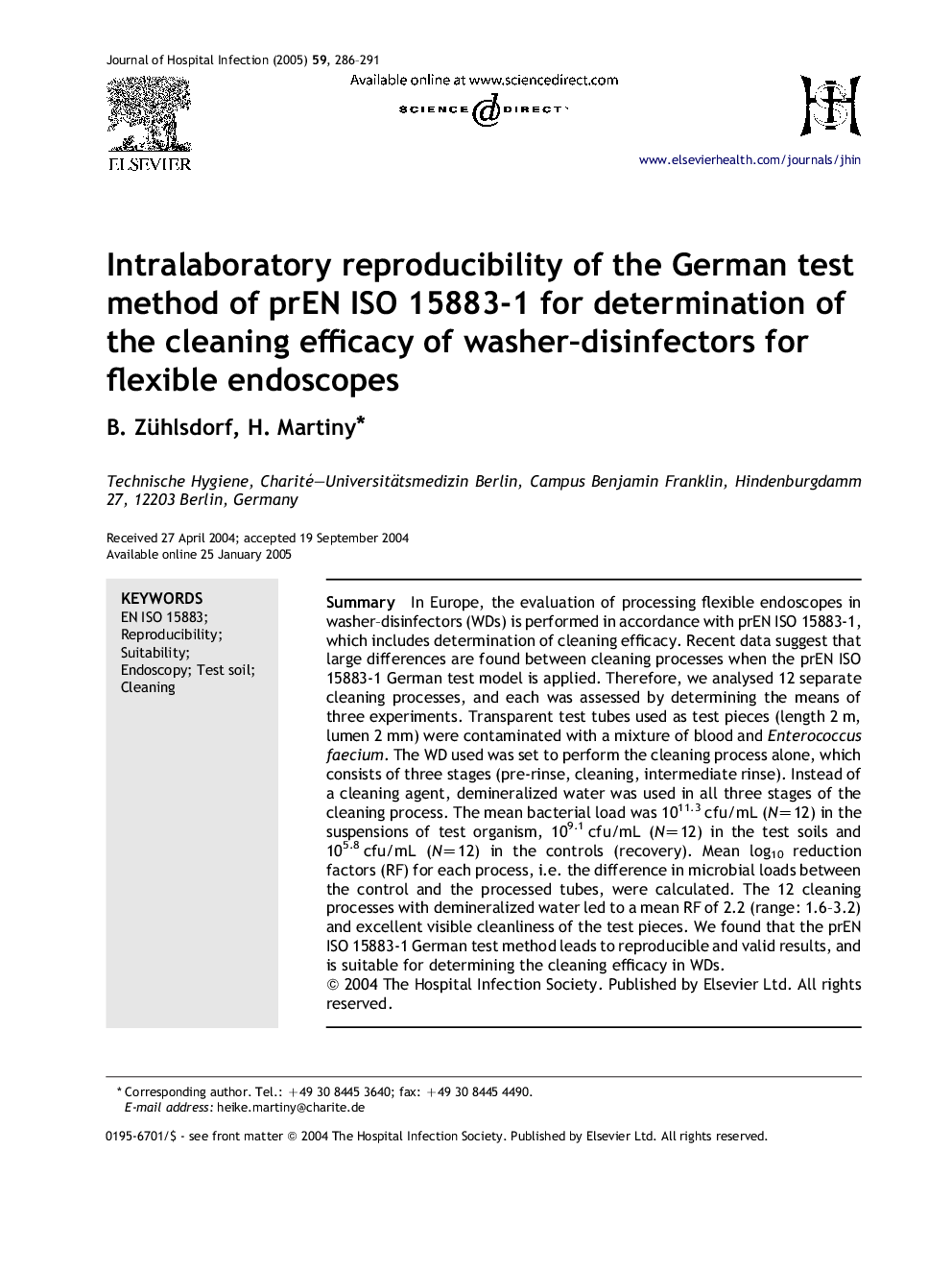| Article ID | Journal | Published Year | Pages | File Type |
|---|---|---|---|---|
| 9269273 | Journal of Hospital Infection | 2005 | 6 Pages |
Abstract
In Europe, the evaluation of processing flexible endoscopes in washer-disinfectors (WDs) is performed in accordance with prEN ISO 15883-1, which includes determination of cleaning efficacy. Recent data suggest that large differences are found between cleaning processes when the prEN ISO 15883-1 German test model is applied. Therefore, we analysed 12 separate cleaning processes, and each was assessed by determining the means of three experiments. Transparent test tubes used as test pieces (length 2Â m, lumen 2Â mm) were contaminated with a mixture of blood and Enterococcus faecium. The WD used was set to perform the cleaning process alone, which consists of three stages (pre-rinse, cleaning, intermediate rinse). Instead of a cleaning agent, demineralized water was used in all three stages of the cleaning process. The mean bacterial load was 1011.3Â cfu/mL (N=12) in the suspensions of test organism, 109.1Â cfu/mL (N=12) in the test soils and 105.8Â cfu/mL (N=12) in the controls (recovery). Mean log10 reduction factors (RF) for each process, i.e. the difference in microbial loads between the control and the processed tubes, were calculated. The 12 cleaning processes with demineralized water led to a mean RF of 2.2 (range: 1.6-3.2) and excellent visible cleanliness of the test pieces. We found that the prEN ISO 15883-1 German test method leads to reproducible and valid results, and is suitable for determining the cleaning efficacy in WDs.
Related Topics
Life Sciences
Immunology and Microbiology
Applied Microbiology and Biotechnology
Authors
B. Zühlsdorf, H. Martiny,
